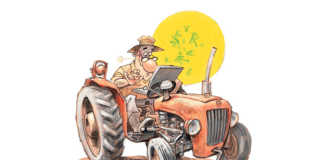Once common in Africa, the Middle East and India, the lion is now heading from the International Union for Conservation of Nature’s (IUCN) Vulnerable Red List to the Endangered List as numbers steadily plummet.
Today, the SA lion population is secure only in large conservation areas such as large national parks (Kruger and Kgalagadi Transfrontier Park, for example) a few provincial game and some private nature reserves. Venturing outside such a conservation area is suicide for a lion.
A large number of lions are in private hands in South Africa. These are purposefully bred for the ‘hunting’ industry. Breeders portray these animals as part of the species’ conservation, yet conservationists do not consider them to be of any value for the survival of the species. They do not contribute to the maintenance of genetic exchange, territorial dispute and defence, ecological processes of predator-prey balancing, or proliferation of the species.
Claims that captive-bred lions contribute to conservation are simply polished propaganda to justify a socially unacceptable practice.
Another fallacy is that the ‘hunting’ of captive-bred lions relieves the pressure on the hunting of wild lions. True hunters do not hunt captive-bred animals, irrespective of the species, hence offering captive-bred animals does not satisfy the needs of a true hunter.
Canned vs captive-bred lions
Legal hunting of wild lions is a small factor in the matrix of stressors on wild lions. Poisoning, persecution and habitat loss are major factors adding to the demise of the population. Captive-bred lions play no role in mitigating these stressors.
The difference between canned- and captive-bred lions is currently debated even at political level. From a purist hunter’s perspective, the debate is stillborn as it focuses on nothing but semantic differences. Both terms classify the animal as not being wild.
In the public eye, the lion that is released from the breeding area into the ‘hunting’ area is a canned lion, irrespective of how well the message is spin-doctored.
Measuring this against the international norm of hunting, namely the fair chase of a wild animal in its natural habitat and its natural state, finally closes the lid on the canned versus captive-bred debate. Attempting to match the shooting of a captive-bred lion to the template of hunting is trying to fit a square plug into a round hole.
Lion poaching
From my observations over the past decade of having been part of the rhino campaign against poaching and fighting for the survival of many species, it is evident that the lion is facing a fate similar to that of the rhino. Rhino poaching, although always a problem, never escalated to the horrific levels we currently have to deal with. From good intelligence, it is evident that certain local individuals went to the Far East to market rhino horn.
A market that was only simmering among the very wealthy all of a sudden had an expectation of good supply and it exploded in a short period. It left the world gasping at the unprecedented slaughter of these pachyderms to feed an apparent insatiable market.
Following in these tracks are the recent revelations that many SA lion breeders are now exporting bones to the Far East to supplement the tiger bone trade. My fear is that the availability of growing quantities of large felid bones may also ignite a market that was always subdued by the limited availability of the commodity, and we may soon see the demand for lion bone escalating exponentially.
Is it not then to be expected that lion poaching for its bones is on the charts? I hope my hypothesis will be proved incorrect but there have already been a number of poaching incidents that appear to be the first signs of a growing trend. The challenges for lions in Africa are increasing as the human population grows beyond the Earth’s carrying capacity for this destructive species.
In central Africa, lions and hyenas fall victim to deliberate poisoning, while in South Africa, the Kruger lions are plagued with bovine tuberculosis. The lion breeders now claim that they are a safeguard should the TB take too heavy a toll on the wild lions. These captive-bred lions are simply not adjusted to the harsh realities of the ecosystem stressors, they are fed donkeys in a wheelbarrow, and they are doubtless inbred. Who are these breeders trying to fool?
The Conservation Breeding Specialist Group of the IUCN’s Species Survival Commission defines the principles and procedures for species rescue, and SA lion breeders are as far from these principles as the Andromeda Galaxy is from the Milky Way. These lions are exactly where they belong: in cages, small camps and pens where they entertain gullible tourists. It may prove calamitous to the species if these lions interact with free-roaming lions and seed their homozygous genes into the wild population.
The recent shooting of Cecil in Zimbabwe has caused an international explosion of anger at lion hunting and the plight of the species. The greatest wrath was reserved for the captive lion industry, but lion hunters in general were castigated. The documentary Blood Lions raised the temperature further, and the normal consumptive hunter has felt the heat. It is annoying to be asked by all and sundry why we, as amateur consumptive hunters, don’t join the campaign against the hunting of Cecil and other lions.
Well, the simple answer is this is: Cecil wasn’t hunted! He was poached!
What is hunting?
Hunting per se is a legal activity in which the hunter is permitted under legislation to hunt an animal under certain conditions. For species such as lion, there are stringent conditions for hunting, and all indications are that the outfitter, landowner, professional hunter and the hunter himself contravened these conditions. Therefore, from a hunting and conservation perspective, Cecil’s ‘hunt’ can only be classified as illegal shooting or poaching of a large predator.
As a consumptive hunter – hunting for meat – I call on everyone who claims to be a hunter to do so according to the definition as stated earlier on and to hunt lawfully. If you don’t, hopefully the animal rights groups will terminate your activities. Of course, the lion breeders will jump on the bandwagon immediately and say that their lions may be legally hunted. Our government and state departments abdicated responsibility years ago and legalised the shooting of captive-bred animals, mostly predators.
It may be legal but it is not hunting.
No more lion hunting!
Finally, we come to hunting of lion per se. Many friends and fellow hunters may challenge my personal position but I now believe that hunting wild lions is no longer sustainable. At some point, we have to draw the line. Had it not been for global termination of whale hunting, it is unlikely that we would have stable and growing whale populations today. There was no choice – terminate whaling or lose the whales.
Is it not perhaps that time now that hunters self-impose a termination of lion hunting in order to save the species?
We already know that poaching, poisoning and diseases are taking out large numbers of lions. But as responsible hunters with a passion for conservation and a respect for all life forms, we can hardly justify an off-take of lions if the odds are against the species.
Or do we simply carry on hunting until we shoot the last lion? Decide for yourself. – Annelie Coleman
Phone Dr Gerhard Verdoorn at the Griffon Poison Information Centre on 082 446 8946 or email [email protected].













